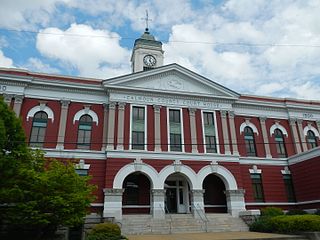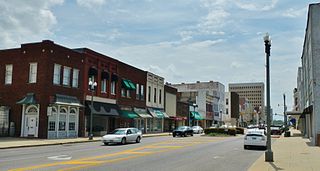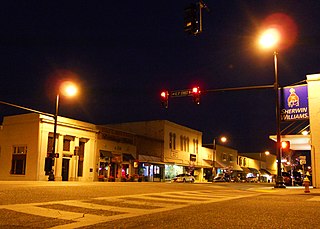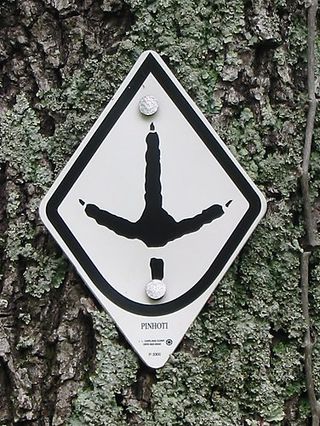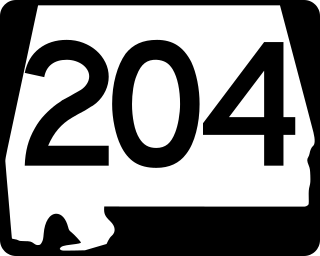This article needs additional citations for verification .(August 2011) |
Piedmont | |
|---|---|
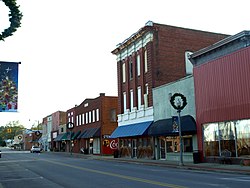 Buildings on Center Avenue | |
 Location of Piedmont in Calhoun County and Cherokee County, Alabama | |
| Coordinates: 33°55′34″N85°36′47″W / 33.92611°N 85.61306°W | |
| Country | United States |
| State | Alabama |
| Counties | Calhoun, Cherokee |
| Government | |
| • Type | Mayor-Council (7 members) |
| • Mayor | Bill Baker |
| Area | |
| • Total | 9.93 sq mi (25.72 km2) |
| • Land | 9.82 sq mi (25.45 km2) |
| • Water | 0.10 sq mi (0.27 km2) |
| Elevation | 702 ft (214 m) |
| Population (2020) | |
| • Total | 4,787 |
| • Density | 487.23/sq mi (188.12/km2) |
| Time zone | UTC-6 (Central (CST)) |
| • Summer (DST) | UTC-5 (CDT) |
| ZIP code | 36272 |
| Area code | 256 |
| FIPS code | 01-59640 |
| GNIS feature ID | 0160373 |
| Website | www |
Piedmont is a city in Calhoun and Cherokee counties in the U.S. state of Alabama. The population was 4,400 at the 2020 census. [2] It is included in the Anniston-Oxford, Alabama Metropolitan Statistical Area.
Contents
- History
- Founding and early growth
- Recent history
- Geography
- Attractions
- Chief Ladiga Trail
- Cheaha Challenge
- Media
- Demographics
- 2020 census
- 2010 census
- Education
- Schools
- Notable people
- References
- External links
The city is approximately one and a half hours west of Atlanta, Georgia via US Hwy 278, one and a half hours northeast of Birmingham, 20 minutes north of Anniston, Alabama via AL-21, and 25 minutes east of Gadsden, Alabama via US Hwy 278. The campus of Jacksonville State University in Jacksonville, Alabama is approximately ten miles south of Piedmont via AL-21.
The city is located in the foothills of the Appalachian Mountains chain and is surrounded by mountains on the city's southern and eastern sides. The area is home to Duggar Mountain, which is Alabama's second highest point, only trailing Mt. Cheaha by a small margin. Piedmont is a tourist destination for outdoor enthusiasts due to its close proximity to many nearby hiking trails, streams and rivers, mountains, the Duggar Mountain Wilderness, the Talladega National Forest and Coleman Lake. Weiss Lake is fourteen miles north of Piedmont via AL-9 and is known as "the Crappie Capital of the World." Piedmont is home to Terrapin Creek, which is a destination for kayaking, canoeing, camping, swimming and fishing. Each year, particularly in the summer, thousands of people visit Piedmont and the surrounding areas due to the recreational opportunities and natural environment of the area.[ citation needed ] Piedmont is also home to the Chief Ladiga Trail, which is a paved trail for walking, jogging and bicycling. The trail runs through downtown Piedmont and runs all the way to Atlanta to the east, and to Anniston, Alabama to the south and west.
Two state highways, AL-9 and AL-21, run through the city limits of Piedmont, as well as US Highway 278. The city and surrounding area is served by the Centre-Piedmont-Cherokee County Regional Airport, which was constructed in 2010. Many surrounding communities are served by the 36272 ZIP code, including Spring Garden, Rock Run, Vigo, Knighten's Crossroads, Ballplay, Pleasant Valley and Nance's Creek. An abundance of people from the surrounding designated census areas and communities make the short commute to the city of Piedmont regularly for employment, commerce, dining, recreation and general shopping. Portions of the nearby communities of Nances Creek, Spring Garden, Piedmont Springs and Vigo rely on police and fire coverage from the city of Piedmont.
The current mayor is Bill Baker, who was chosen by the city council to lead after elected mayor Rick Freeman resigned due to medical issues.

